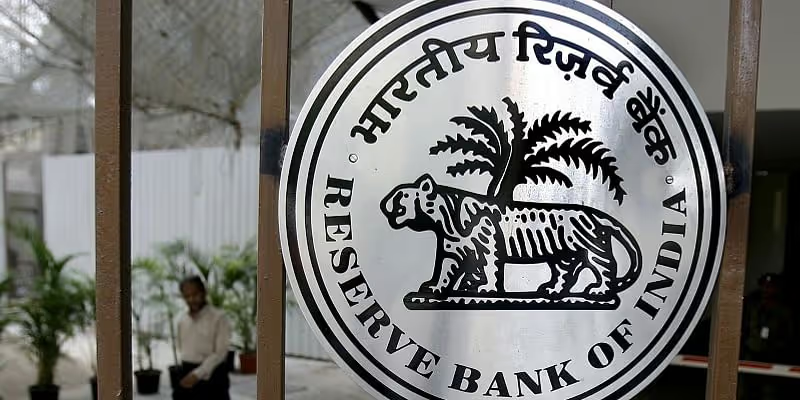RBI's digital lending guidelines: A tectonic shift in the fintech world
Let’s see why the RBI had to issue guidelines for lending businesses to clarify the scope and responsibilities across the lending lifecycle.
To safeguard the interests of borrowers and improve consumer trust in the digital lending ecosystem, the Reserve Bank of India (RBI) recently ordained that lending businesses have to comprehensively clarify the scope and responsibilities across the lending lifecycle.
An official statement released by the RBI emphasised that outsourcing arrangements entered by Regulated Entities (REs) with a Lending Service Provider (LSP)/Digital Lending App (DLA) do not reduce the REs’ obligations while laying down clear guidelines for LSP/DLA as well.
Let’s see why the RBI had to issue such seemingly drastic measures to protect consumer interest.
India’s burgeoning fintech ecosystem has allowed countless companies to emerge and offer a plethora of credit services. However, this intensified growth also led to the emergence of nefarious entities duping unwary customers by operating under the pretext of providing fintech cover. Unregulated digital lenders conducting unethical business, excessive engagement of third parties, and the rising risk to digital privacy amid the mushrooming fintech vista have become commonplace. Countless customers are falling prey to unjust interest rates and harrowing tactics employed by claptrap fintech firms.
In a bid to counter this rather unsettling impact of unchecked fintech uprising, the RBI has now issued a comprehensive set of guidelines with diverse implications, including lending processes, disclosures, technology, and data gathering while also enabling the crediting of digital loans directly into a customer’s bank account and not via any third party.
The apex banking authority has been championing innovation across the financial system, products, and credit delivery methods while simultaneously catalysing methodical growth, maintaining financial stability, and ensuring the protection of depositors’ and customers' interests.
While the RBI's recent guidelines on digital lending guidelines have accorded more responsibility on the part of novel lending companies by compelling them to concentrate on their non-banking financial company (NBFC) units and book building, the regulator assigns pertinence to regulated entities. This is a veritable paradigm shift for the digital lending industry that has majorly focused on expanding the lending-distribution platform to exhibit scale and depend on loss guarantee cover practices like First Loss Default Guarantee (FLDG) to take part in various lending activities via risk-taking with both banks and NBFCs.

(Photo credit: AFP)
Innovations on digital lending welcome but must be responsible: RBI guv Shaktikanta Das
The RBI guidelines accord a comparative advantage to those lending fintech firms with an active NBFC, making it a scrupulous effort to shape the required capital structure to lend ahead. Now, to gain a considerable proportion of the market, fintechs will work towards capitalising their NBFC and cement an asset-heavy business instead of an asset-light one. Therefore, they have to accumulate capital which will result in valuations being driven by the nature of assets for digital lending players as compared to charting high growth.
Also, these latest digital lending guidelines have put the spotlight on NBFCs and regulated entities. The apex bank recently dished out the initial digital lending norms which enable loan disbursals and repayments only among borrowers and entities regulated by the banking regulator.
Any outstanding fees payable to a loan service provider will now be collected by the regulated entity from the borrower. This implies that the RBI is eager to encourage more data clarity on customer fees or related charges (which were earlier masked by fintechs), making way for a better understanding of the landscape and potentially impacting subsequent regulations.
One of the common understandings emerging from the latest RBI guidelines is that FLDG falls under the definition of synthetic securitisation under the present regulatory framework and is not permissible. In case of not being associated with an NBFC, it is going to be challenging for these fintech entities to take part in the risk-taking process as authorised entities are likely to opt-out of such fixtures.
The novel guidelines will lay emphasis on the restoration of the digital NBFC ecosystem and are slated to lead to higher costs of compliance for lending startups. While fintech firms are still analysing these guidelines, some of the immediate operational scope includes lending contracts from their platform business to their NBFCs.
Some fintech firms have confided that they are seeking to build the missing links of the consent architecture to gain data from customers as well as cement clear audit trails for lucrative tech service provider partnerships. The new guidelines on digital lending will serve to alleviate concerns around unbridled engagement of third parties, misselling, breach of data privacy, unfair business conduct, charging of exorbitant interest rates, and unethical recovery practices.
The current set of measures points in the right direction, with the RBI ensuring the protection of borrowers against prevalent illegal lending practices, allowing complete visibility of the business activities and in terms of how REs and borrowers interact. While this now means a higher cost of compliance, over the medium to long term, it will allow fintechs to differentiate between the non-genuine players, resulting in increased trust of borrowers in the entire industry.
Fintechs now have to ensure greater alignment, adopting the technology and systems with the regulatory entities. Transparency, trust, and positive consumer sentiment will also augur well for the largely underpenetrated lending sector over the medium to long term.
Edited by Kanishk Singh
(Disclaimer: The views and opinions expressed in this article are those of the author and do not necessarily reflect the views of YourStory.)







